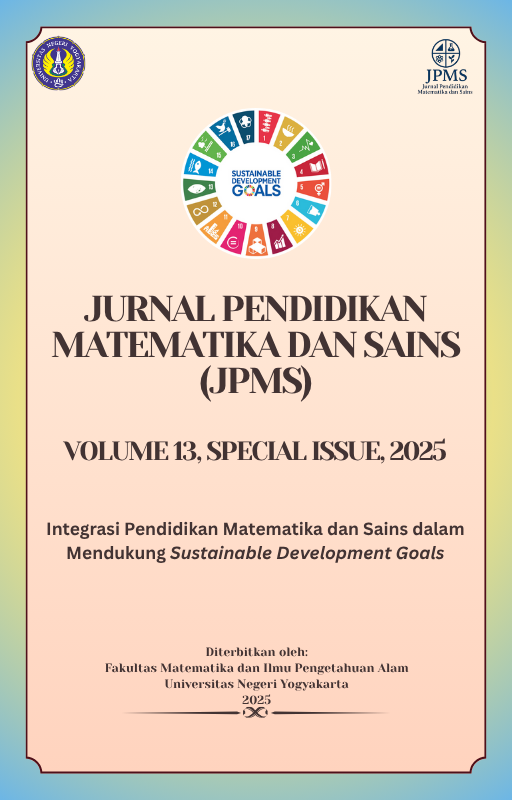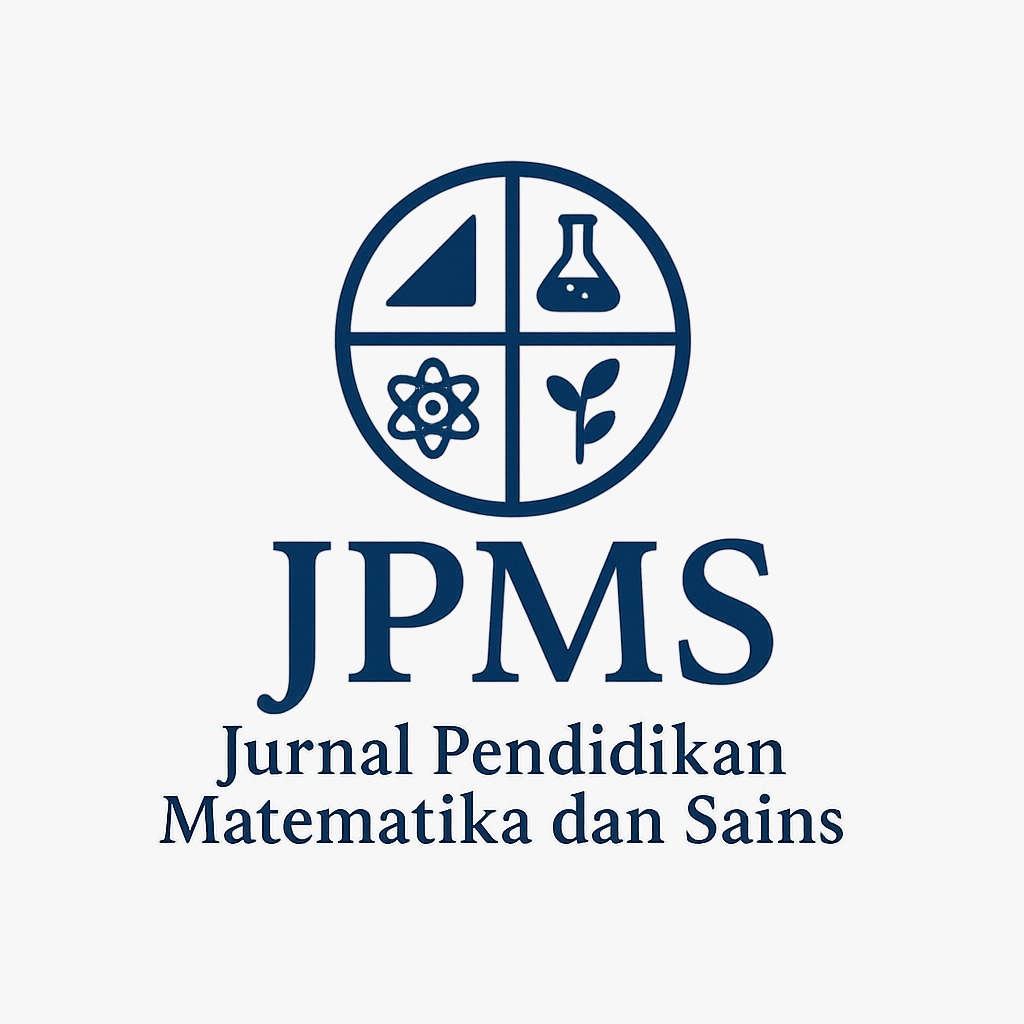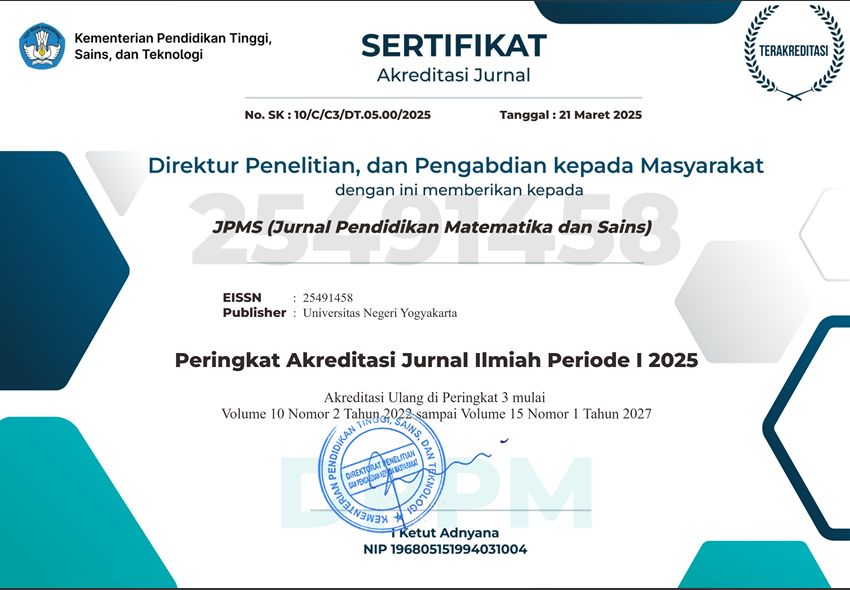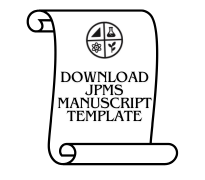Building Sustainable Education with the Literacy and Research-oriented Cooperative Problem-based Learning: A Bridge in the Activeness of Chemistry Education Students
DOI:
https://doi.org/10.21831/jpms.v13iSpecial_issue.88392Keywords:
Activeness, Chemistry education students, LIRACLE learning model, Sustainable educationAbstract
This study aims to examine the effect of the LIRACLE model (Literacy and Research-Oriented Cooperative Problem-Based Learning) on student activeness in undergraduate chemistry learning. LIRACLE is an innovative instructional model that integrates literacy strategies, cooperative learning, and research-based approaches within a problem-based learning framework. The study employed a quasi-experimental design with two groups: an experimental group (38 students) that received the LIRACLE treatment and a control group (44 students) that followed conventional PBL. Student activeness data were collected through observation sheets over six class meetings and analyzed using the Mann-Whitney test due to the non-normal distribution of the data. The results showed a significant difference in student activeness between the experimental and control groups, with a significance value of 0.000 (p < 0.05). Students who participated in LIRACLE-based learning demonstrated higher levels of engagement, both cognitively, socially, and affectively. The implementation of LIRACLE proved effective in creating a participatory and reflective learning environment, encouraging students to take an active role in constructing their understanding. These findings support the importance of developing active learning strategies in higher education, particularly to achieve meaningful chemistry learning outcomes in alignment with Sustainable Development Goal 4.
References
Arifani, I., Nurul, L., & Rahmawan, S. (2025). Problem based learning (pbl) learning model for increasing learning mitivation in chemistry subject: Literature review with bibliometric anlysis. ASEAN Journal for Science Education, 4(1), 17–30
Cai, Y., & Wolff, A. (2023). Education and sustainable development goals. Sustainability, 15(1), 643. https://doi.org/10.3390/su15010643
Deslauriers, L., McCarty, L. S., Miller, K., Callaghan, K., & Kestin, G. (2019). Measuring actual learning versus feeling of learning in response to active engagement. Proceedings of the National Academy of Sciences, 116(39), 19251–19257. https://doi.org/10.1073/pnas.1821936116
Dochy, F., Segers, M., Van den Bossche, P., & Gijbels, D. (2003). Effects of problem-based learning: A meta-analysis. Learning and Instruction, 13(5), 533–568. https://doi.org/10.1016/S0959-4752(02)00025-7
Easa, E., & Blonder, R. (2024). Fostering inclusive learning: customized kits in chemistry education and their influence on self-efficacy, attitudes and achievements. Chemistry Education Research and Practice, https://doi.org/10.1039/D4RP00144C
Freeman, S., Eddy, S. L., McDonough, M., Smith, M. K., Okoroafor, N., Jordt, H., & Wenderoth, M. P. (2014). Active learning increases student performance in science, engineering, and mathematics. Proceedings of the National Academy of Sciences, 111(23), 8410–8415. https://doi.org/10.1073/pnas.1319030111
Ferguson, T., & Roofe, C. G. (2020). SDG 4 in higher education: Challenges and opportunities. International Journal of Sustainability in Higher Education, 21(5), 959–975. https://doi.org/10.1108/IJSHE-12-2019-0353
Gillies, R. M. (2016). Cooperative learning: Review of research and practice. Australian Journal of Teacher Education, 41(3), 39–54. https://doi.org/10.14221/ajte.2016v41n3.3
Healey, M., & Jenkins, A. (2009). Developing undergraduate research and inquiry. York: Higher Education Academy.
Hmelo-Silver, C. E. (2004). Problem-based learning: What and how do students learn? Educational Psychology Review, 16(3), 235–266. https://doi.org/10.1023/B:EDPR.0000034022.16470.f3
Järvelä, S., & Renninger, K. A. (2014). Designing for learning: Interest, motivation, and engagement. Cambridge Handbook of the Learning Sciences. 668–685. https://works.swarthmore.edu/fac-education/122
Johnson, D. W., & Johnson, R. T. (2009). An educational psychology success story: Social interdependence theory and cooperative learning. Educational Researcher, 38(5), 365–379. https://doi.org/10.3102/0013189X09339057
Keen, C., & Sevian, H. (2022). Qualifying domains of student struggle in undergraduate general chemistry laboratory. Chemistry Education Research and Practice, 23, 12–37. https://doi.org/10.1039/D1RP00051A
Mai, L. X., Ngoc, L. K., & Thao, L. T. (2024). Factors hindering student participation in english-speaking classes: Student and lecturer perceptions. SAGE Open, 14(3). https://doi.org/10.1177/21582440241266297
Michael, J. (2006). Where's the evidence that active learning works? Advances in Physiology Education, 30(4), 159–167. https://doi.org/10.1152/advan.00053.2006
Mokski, E., Leal Filho, W., Sehnem, S., & Guerra, A. (2023). Education for sustainable development in higher education institutions: An approach for effective interdisciplinary. International Journal of Sustainability in Higher Education, 24(1), 96–117. https://doi.org/10.1108/IJSHE-07-2021-0306
Mondragon, N. I., Yarritu, I., Saez de Cámara, E., Beloki, N., & Vozmediano, L. (2023). The challenge of education for sustainability in higher education: Key themes and competences within the University of the Basque Country. Frontiers in Psychology, 14, 1123496. https://doi.org/10.3389/fpsyg.2023.1158636
Norris, S. P., & Phillips, L. M. (2003). How literacy in its fundamental sense is central to scientific literacy. Science Education, 87(2), 224–240. https://doi.org/10.1002/sce.10066
Pratama, F. I., Rohaeti E., & Laksono, E. W. (2025). Innovation of the liracle model: Case of gajah wong river pollution by pb metal. Jurnal Pendidikan Matematika dan Sains, 13(2), 207–214. https://dx.doi.org/10.21831/jpms.v13i2.84783
Pratama, F. I., Rohaeti, E., Ariantika, D., Fauzia, S. D., Wulandari, N. I., & Pawestri, J. S. (2024). Penjabaran model literacy and research-oriented cooperative problem-based learning dalam kasus pencemaran air oleh logam fe . Jurnal Pendidikan Matematika dan Sains, 12(2), 132–138. https://dx.doi.org/10.21831/jpms.v12i2.79113
Prince, M. (2013). Does active learning work? A review of the research. Journal of Engineering Education, 93(3), 223–231. https://doi.org/10.1002/j.2168-9830.2004.tb00809.x
Rohi, S., & Muslim, S. (2022). Factors influencing classroom participation: A case study of undergraduate students. Journal for Research in Applied Sciences and Biotechnology, 2(1). https://doi.org/10.55544/jrasb.2.1.13
Shanahan, T., & Shanahan, C. (2008). Teaching disciplinary literacy to adolescents: Rethinking content-area literacy. Harvard Educational Review, 78(1), 40–59. https://doi.org/10.17763/haer.78.1.v62444321p602101
Slavin, R. E. (2014). Cooperative learning and academic achievement: Why does groupwork work? Anales de Psicología/Annals of Psychology, 30(3), 785–791. https://doi.org/10.6018/analesps.30.3.201201
Spronken-Smith, R., Walker, R., Batchelor, J., O’Steen, B., & Angelo, T. (2012). Evaluating student perceptions of learning processes and intended learning outcomes under inquiry approaches. Assessment & Evaluation in Higher Education, 37(1), 57–72. https://doi.org/10.1080/02602938.2010.496531
Stang, J. B., & Roll, I. (2014). Interactions between teaching assistands and student boost engagement in physics labs. Physical Review Physics Education Research. 10(020117). https://doi.org/10.1103/PhysRevSTPER.10.020117
States, N. E., Lovig, C., Martin, K., Nennig, H. T., & Cole, R. S. (2023). Let students work: Analysis of the role of differing facilitation on student engagement in a large stadium-style lecture hall. Journal of Chemical Education, 4237–4248. https://doi.org/10.1021/acs.jchemed.3c00750
UNESCO. (2015). Education for sustainable development: Goals, learning objectives. UNESCO Publishing.
Weiss, M., Barth, M., Wiek, Arnim., & von Wehder, H. (2021). Drivers and barriers of implementing sustainability curricula in hidher education – assumptions and evidence. Higher Education Studies,11(2). 42–64. https://doi.org/10.5539/hes.v11n2p42
Yew, E. H. J., & Goh, K. (2016). Problem-based learning: An overview of its process and impact on learning. Health Professions Education, 2(2), 75–79. https://doi.org/10.1016/j.hpe.2016.01.004
Yong, F. L., Albert, F., Chin, C. H., Uie, L. L. L., & Kong, M. Sustainable development goal 4 quality education: Implications on higher educational institutions in malaysia. International Journal of Novel Research in Education and Learning, 11(4), 28–37. https://doi.org/10.5281/zenodo.13333099
Yore, L. D., Pimm, D., & Tuan, H. L. (2007). The literacy component of mathematical and scientific literacy. International Journal of Science and Mathematics Education, 5(4), 559–589. https://doi.org/10.1007/s10763-007-9089-4
Zepke, N., & Leach, L. (2010). Improving student engagement: Ten proposals for action. Active Learning in Higher Education, 11(3), 167–177. https://doi.org/10.1177/1469787410379680
Downloads
Published
How to Cite
Issue
Section
Citation Check
License

This work is licensed under a Creative Commons Attribution-ShareAlike 4.0 International License.
Jurnal Pendidikan Matematika dan Sains allows readers to read, download, copy, distribute, print, search, or link to its articles' full texts and allows readers to use them for any other lawful purpose. The journal allows the author(s) to hold the copyright without restrictions. Finally, the journal allows the author(s) to retain publishing rights without restrictions
- Authors are allowed to archive their submitted article in an open access repository
- Authors are allowed to archive the final published article in an open access repository with an acknowledgment of its initial publication in this journal

This work is licensed under a Creative Commons Attribution-ShareAlike 4.0 Generic License.





